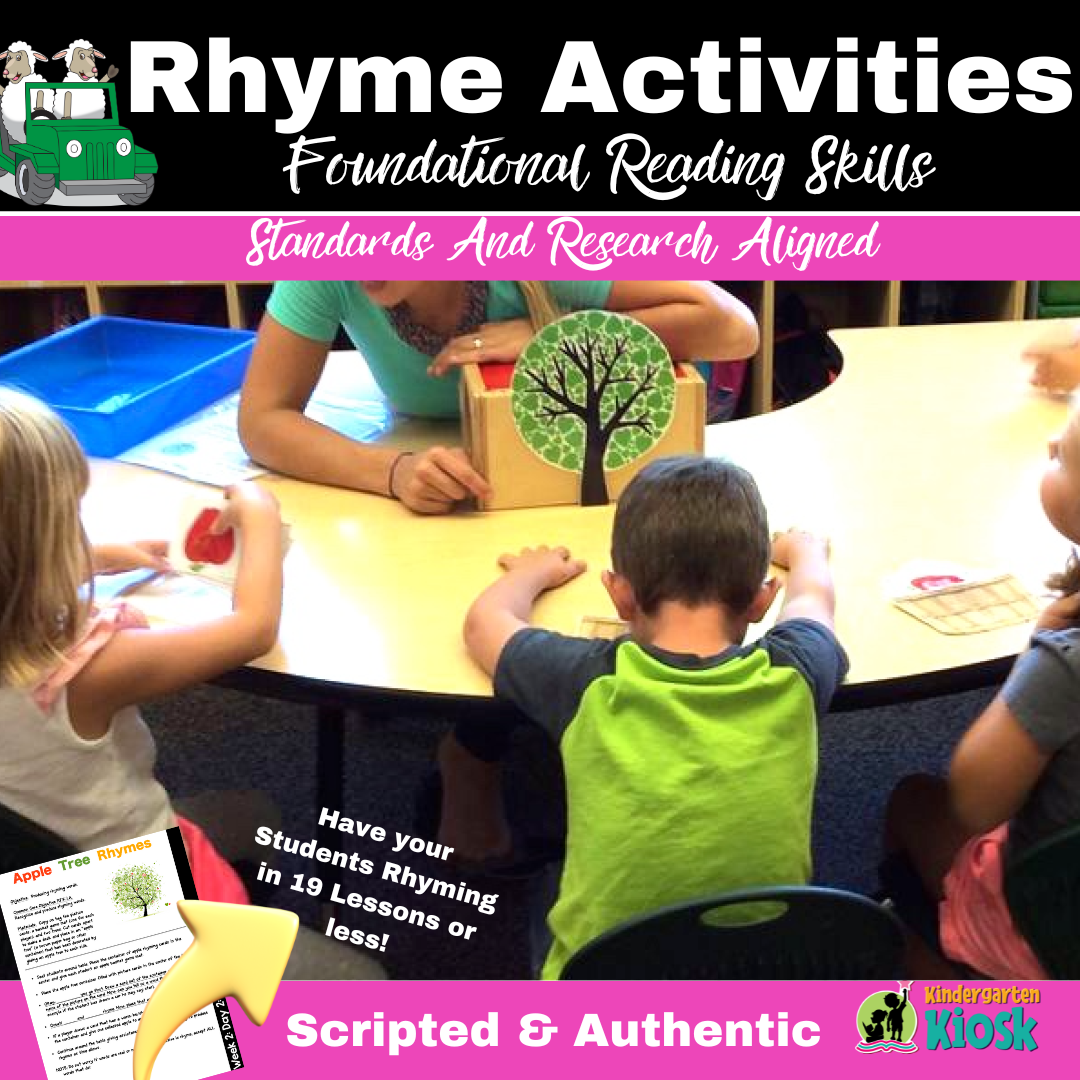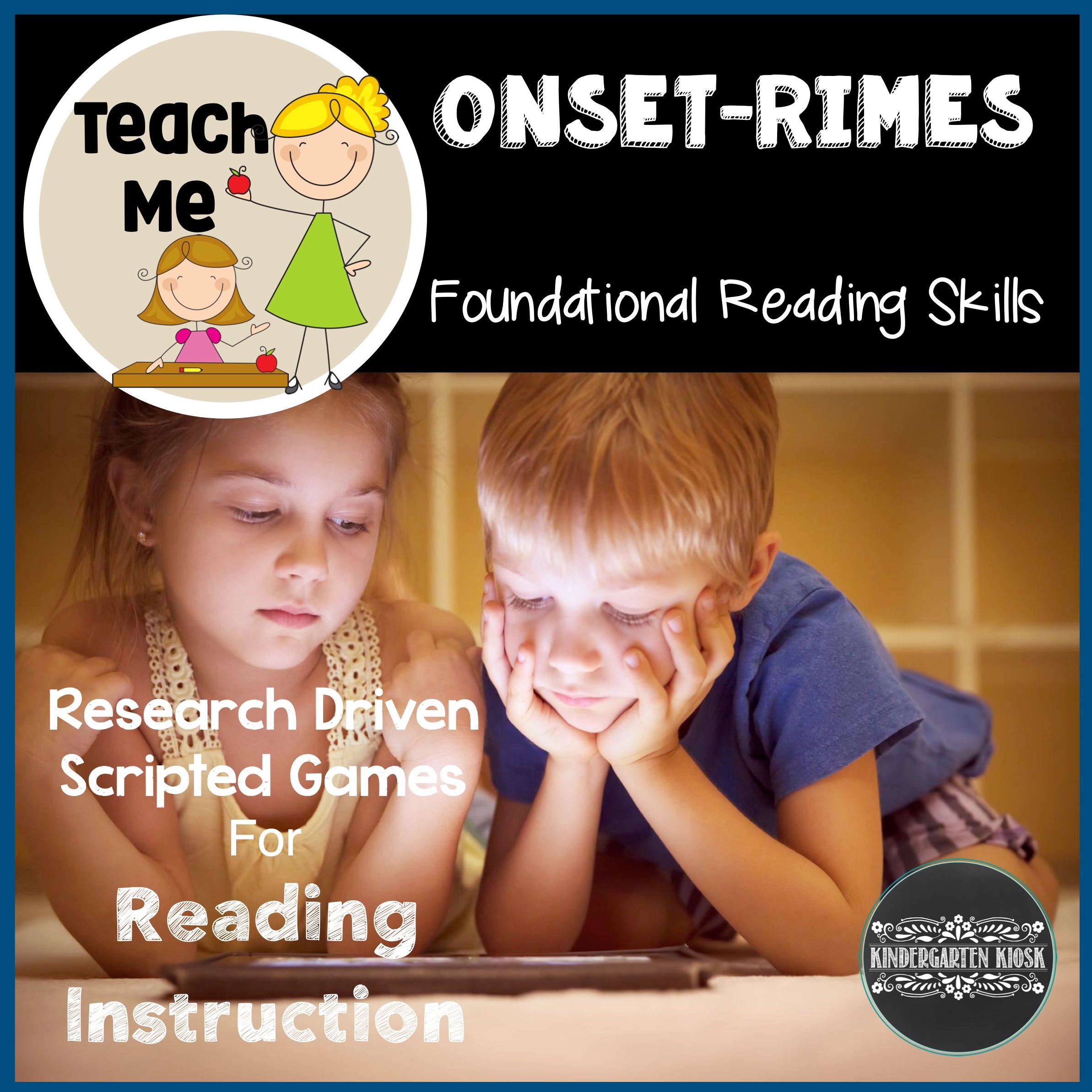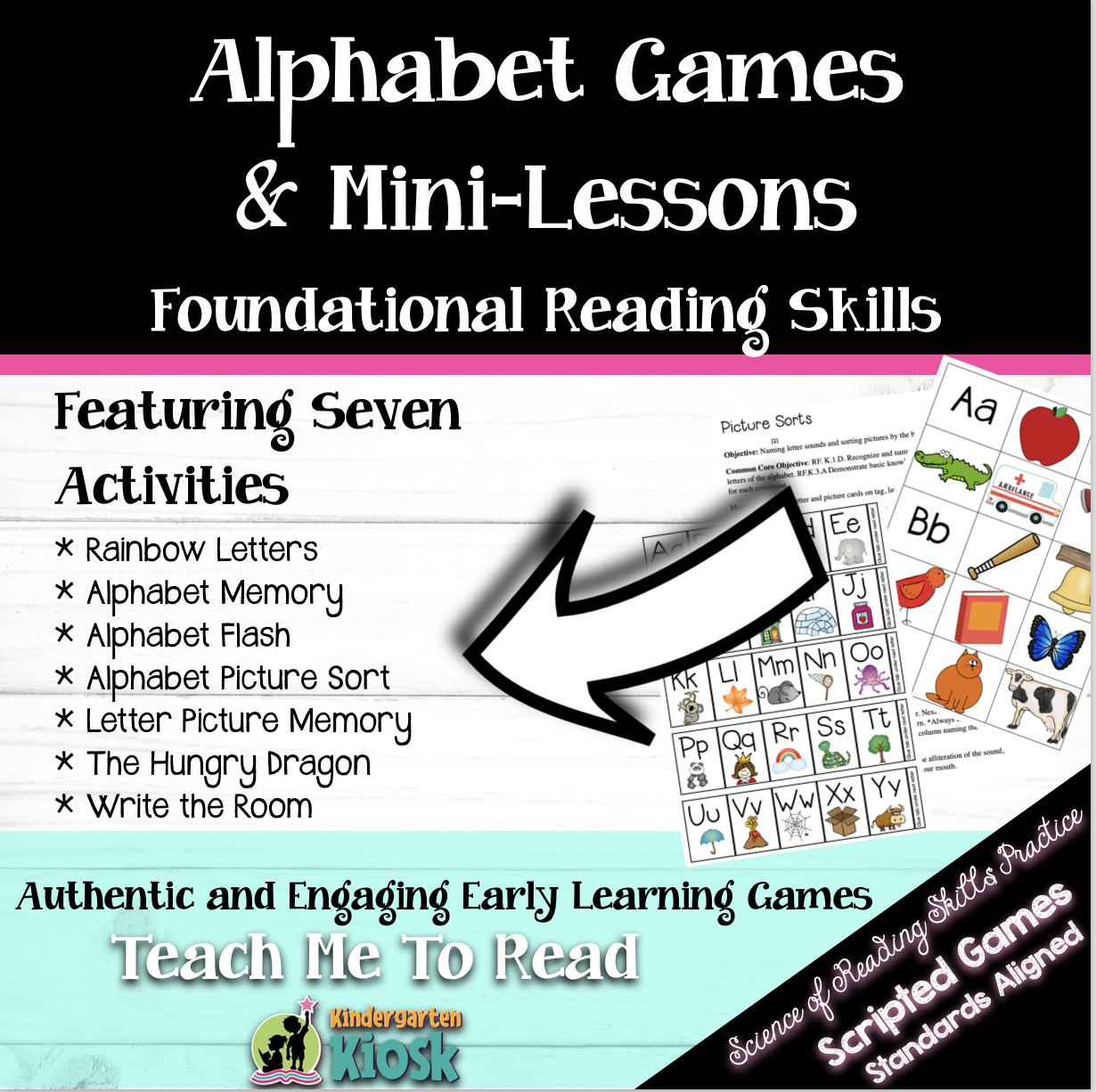The Daily 5 in Kindergarten
by Kathleen Law
The Daily 5 is an approach to teaching reading and writing that has been embraced by elementary teachers all over the country. But what does this approach entail? According to the creators of the Daily 5, it is a framework for structuring literacy time. It is a design to help students develop lifelong habits of reading, writing, and working independently.
The Daily 5 consists of five components or tasks for students. These are:
- Read to Self
- Work on Writing
- Word Work
- Listen to Reading
- Read to Someone
While the students work independently on one of these literacy activities, the teacher observes, confers with students about writing or reading, or works with students in small groups or individually.
Does the Daily 5 work in kindergarten? Although some adaptations need to be made, it has been successful in both full-day and half-day kindergarten classrooms. The Daily 5framework allows kindergarten teachers to differentiate instruction while engaging students in reading and writing.
This information presented will not explain everything about the framework, but will give you an overview of it instead. If you are interested in using the Daily 5, start by reading the book. Gail Boushey and Joan Moser, the authors of The Daily 5, give specific suggestions and recommendations for starting the program. With their guidance, you will be able to structure your literacy time in a way that has proven to successfully promote independence while engaging students in meaningful and authentic literacy tasks.
Principles and Key Ideas
The Daily 5 presents principles, procedures and key ideas that need to be considered by anyone using this framework. Most are not unique to the Daily 5, but are integral to the program.
Independence - A major goal of the Daily 5 is to help develop independence with students. By pursuing independence, students are more engaged in literacy activities and the teacher has time to work with small groups and individual students.
Stamina - Students will become more independent as readers and writers gradually. Set expectations, then practice the task for 30 seconds or one minute. Build stamina by increasing the time by one minute on each successive day until you reach the longest time you want students to participate in any task.
Sense of Urgency - Identifying what the students will be doing - reading, writing, working with words etc. - and why helps the students focus on the importance of the task. Over time, students should be able to make statements such as “We work on reading to become better readers.” or “We work on writing because it is fun.”
I-Charts - (I for Independent) A chart of desired behaviors or expectations is developed for each of the five components. The chart is labeled with the task at the the top; the desired behaviors for the students are listed on the left of the chart and the teacher’s job is listed on the right. Although it’s tempting to provide a ready-made chart for the students, an I-chart is more meaningful when it is created by the teacher and the students. The I-chart for each task should be posted in the room and referred to frequently during the time when students are practicing the task and building stamina.
Foundation Lessons - These lesson help establish procedures and routines within each task of the Daily 5. By teaching these, students learn what is expected and how to do the activity. The foundation lessons lead to more student independence and fewer classroom management issues.
Poster supporting the foundation lesson for choosing “good fit” books.
Modeling - After completing an I-chart or a foundation lesson, the authors of The Daily 5 suggest modeling the activity. They recommend a correct modeling, then an incorrect modeling followed by another correct modeling of the task. The modeling process is repeated at the beginning of practice or stamina-building rounds; it should also be used whenever student behavior indicates that a refresher course is needed.
Focus Lessons - Whole group instruction has a place in the Daily 5, however, it is presented in a unique way. Students gather after each round or period of working on one of the Daily 5 tasks for a focus or mini-lesson. The lesson presented can be from a district-adopted reading series or it can be developed by the teacher to meet the needs of the class based on observations. The key to a good focus lesson is to keep it short! Kindergartners should only meet for five to seven minutes at a time.
Choice - The authors of The Daily 5 believe students are more engaged and excited by literacy when they have a say in the process. Although the teacher initially seats students around the room when a new component of the Daily 5 is introduced, as thestudents adopt the I-chart behaviors, that responsibility can be released to them. The books used at the beginning of Read to Self are chosen by the teacher; after learning more about how to choose appropriate books, students can take on that job. When the students have developed enough stamina in Read to Self and Work on Writing, you can also introduce choice in choosing what task to work on first. How much choice you include is up to you; just make sure you give your students some responsibility for their own learning.
Read to Self
We all know the research on reading - students who spend more time reading become better readers. Unfortunately, most reading series provide for about seven minutes of reading each day. The Daily 5 bucks this trend; students spend the majority of their literacy time reading. Three of the recommended literacy activities are reading tasks: Read to Self, Read To Someone, and Listen to Reading.
The cornerstone of the Daily 5 may very well be Read to Self; this is when the foundation for the Daily 5 is established. During the launch of this literacy activity, students gain an understanding of appropriate behaviors, expectations, and procedures. They begin to read independently and build stamina while the teacher works with students.
To implement Read to Self successfully, expectations need to be established. This is done through lessons, discussions, and practice. Together the teacher and students develop an I-chart of behaviors that clearly defines what the students and the teacher should be doing. This chart is posted and reviewed often.
Start with one or two expectations. Add another desired behavior each day until the I-chart is complete.
To encourage all students to read, an early lesson presents the idea that books can be read in three ways - by reading the words, reading the story from the pictures, or re-telling a familiar story. This can easily be demonstrated with a favorite book such as The Three Bears or Brown Bear, Brown Bear. Students quickly grasp this concept and participate in Read to Self without hesitation.
The authors of The Daily 5 suggest starting Read to Self with a three minute reading time. When the Daily 5 is started mid-year, it is possible to achieve that amount of time. If the program is started after the first two or three weeks of kindergarten, however, students may only be able to handle independent reading for thirty seconds! In either case, the teacher and students gather together after a short period of reading to discuss and model good reading behaviors. Students again practice independent reading, followed by another group discussion. The whole process is often followed again to give the students repeated practice and reinforcement. On each successive day, a minute is added until students reach the desired time length. Students gather together before and after each period of independent reading to review the I-chart and/or model good reading practices.
With regular independent reading periods, students need easy access to a good supply of books. To keep students engaged and on task, they should have all of their books with them at the beginning of Read to Self. Initially the teacher selects the books (a variety of books from Levels A through I); eventually students take on this task.
A student’s books can be stored in individual tubs, boxes, or zip-lock bags.
Whether you follow the Daily 5 procedure or not, getting books into the hands of your students is important.
Work on Writing
Lucy Calkins states, “When you provide students with constant opportunities to read and to write, and when you actively and assertively teach into their best efforts, their literacy development will astonish you….”
As important as reading is, literacy instruction cannot begin and end without writing. Research has shown that reading and writing work hand-in-hand; reading improves writing skills and writing improves reading skills.
Because of the importance of writing, the authors of The Daily 5 present Work on Writing as the second literacy task to introduce. While your students are building stamina in independent reading (increasing time by one minute each day), the foundation lessons for writing can be taught. With these lessons the teacher introduces writing materials, helps the students develop a list of potential topics, and models writing to demonstrate how to write even if the spelling of a word is not known.
When students achieve ten minutes of independent reading, Work on Writing can be started. As with Read to Self, an I-chart of expected behaviors is developed and students begin to write independently. The initial writing period may last one minute or less!
One of the key ideas of the Daily 5 is that you give students many opportunities to practice the correct procedures. In between writing practice times, the class gathers to review the I-chart and model correct behaviors. This helps students develop good habits while building stamina for independent writing.
Students can keep a journal and a pencil in their book box to keep reading and writing materials easily assessable.
Continue to build on the procedures developed with Read to Self by adding a minute to Work on Writing each day. By increasing the time gradually, your students will build stamina while developing the confidence to write.
Have materials available for book making.
Word Work
Although a few kindergartners are able to read at the beginning of the school year, most kindergarten students are at a pre-reading stage. Many children need to work on letters and sounds; others are ready to sound out words and learn sight words. The third component of the Daily 5- Word Work - addresses this issue.
Word Work is exactly what it sounds like - students work on learning words. At the kindergarten level, Word Work may initially need to include working on letter and sound recognition, also.
As with Read to Self and Work on Writing, the expectations for student behavior must be established before beginning. Students need to be taught how to access and return materials for every Daily 5 task, but more instruction and practice may be needed for Word Work. Students need to know how to find the Word Work materials and understand how to use them to accomplish the goal of Word Work. They also need to realize that games, manipulatives, and word cards must be picked up and stored properly before continuing on to another literacy activity. To manage this, a set of shelves or a specific area for Word Work materials is needed. With labels or pictures on the material and its corresponding shelf or space. even the youngest student can clean up independently.
When introducing Read to Self or Work on Writing, all students practice the same task at the same time. After a month or so, some students can be writing while others are reading. Shortly after that, Word Work can be introduced. Students can begin participating in this literacy task while others are working on reading and/or writing. It is not necessary to build stamina by adding one minute each day.
Materials to provide for Word Work include such things as dry erase boards, magnetic letters, pipe cleaners, sand, play dough, letter tiles, etc. The authors of The Daily 5 recommend introducing these materials gradually, then making them available for a long time - possibly for the rest of the year! They believe the focus then is on the words rather than the material. You can change out alphabet, decoding, or sight word games for variety and to keep this area fresh and interesting, however.
Whether you follow the Daily 5 or not, giving your students the opportunity to play alphabet, decoding, and sight word games will enhance their learning.
Listen To Reading
Although there are five tasks in the Daily 5, the core of the program includes Read to Self, Work on Writing, and Word Work. If your time is limited, those are the work sessions that students should complete every day. However, the Daily 5 was so named because it includes 5 literacy tasks that will help your students grow as readers and writers. The final two are Listen to Reading and Read to Someone.
Because the foundation and procedures are set with Read to Self and Work on Writing, it’s easy to establish the purpose, create a sense of urgency, and develop an I-chart for the final tasks. Students are familiar with the process and are usually eager to try new literacy activities. As with Word Work, it is not necessary to build stamina for Read to Someone or Listen to Reading. Students should be able to work on any task for the full time due to the stamina-building done through Read to Self and Work on Writing.
Before beginning Listen to Reading, help the students develop an I-chart of desired behaviors and teach the students how to use the listening materials. It is especially important to define what students should do when the story is over (repeat it or listen to another story) because the length of any story most likely will not fit exactly into a Daily 5 time frame.
Modeling correct behavior for Listen to Reading can be demonstrated in a large group session, but the practice for this literacy activity is usually done by small groups because of the limited number of listening materials. These materials may include computers, I-pads, leap pads, tapes, and/or CDs. Just one material should be introduced each day or two so every student has the opportunity to use it without confusing the instructions and demonstrations for two devices.
While upper grades often drop or limit the Listen to Reading option during Daily 5, it is extremely important to include this task in kindergarten. Listen to Reading provides the students with another way to become better readers. By listening to stories, students become more fluent and expressive. Listening to stories at a higher reading level also helps students develop comprehension skills and increase vocabulary. Beyond the benefits to reading skills, listening to books is an enjoyable reading activity for most students and can contribute to a student’s motivation to learn to read.
Read to Someone
Think about something you enjoy doing - cooking, reading, watching movies, hanging out with friends or family. Aren’t you motivated to spend as much time as possible doing that activity? The same can be said for Read to Someone, the fifth Daily 5 task. Most kids like to read with others; they enjoy the companionship and they bond as classmates and readers through this shared experience. Because they have fun with this literacy activity, they are eager to read more.
By the time Read to Someone is introduced, kindergarten students are masters of the Daily 5 structure. They understand the behaviors and expectations, the purpose of literacy activities, and the process of the Daily 5. Adding Read to Someone as another option is exciting and most students embrace is whole-heartedly.
Before beginning Read to Someone, an I-chart must be developed and procedures specific to this task need to be modeled. Foundation lessons help students learn how to sit (EEKK - elbow to elbow, knee to knee), understand the role of each person during the reading, and determine who should read first.
The books used for Read to Someone can be the same books used for Read to Self. Each partner chooses a book to read to his/her partner. At times the students may enjoy reading the same book together; most of the time the books will be different, however. This allows each student to read at his/her own level.
Read to Someone completes the choices or tasks for the Daily 5 framework. Together the five tasks - Read to Self, Work on Writing, Word Work, Listen to Reading, and Read to Someone - help students learn to work independently while improving as readers and writers. They also provide a method for teachers to organize literacy time to include opportunities to work with students. If you are interested in knowing more about the Daily 5 or if you want to explore the possibility of using it in your classroom, read The Daily 5 by Gail Boushey and Joan Moser The Daily 5 may just be what you are looking for to help meet the literacy needs of your students.





























